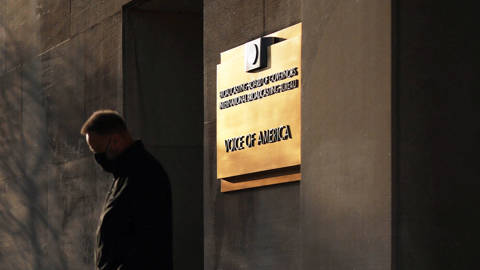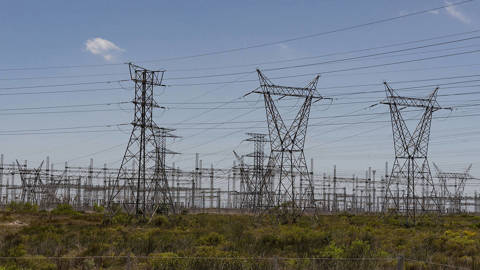Moody’s introduced “market implied ratings” about a decade ago. These allow investors to compare Moody’s ratings with the opinions embedded in bond, CDS and stock prices. Because bond ratings are methodology driven and rely to a great extent on historical data, they tend to be stable, lagging and path-dependent, whereas market-implied ratings are unstable and immediate, without path-dependency.
I find it instructive to compare Moody’s bond ratings with bond-price implied ratings. When the disparity is great--in either direction--it is a signal to dig deeper. One example is Caisse Autonome de Refinancement, which Moody’s sees as Aa, but which the bond market sees as Baa. That would suggest that someone needs to take a second look, probably the bond market.
Another big outlier is Dexia Credit Local, the French-Belgian-Luxembourg municipal lender that melted down after 2008. Dexia is a big one: 356B euro. The rating differential between Moody’s (Baa) and the bond market (Caa) is very wide. The bank itself is insolvent, illiquid and opaque, but there is an elaborately designed multinational Rube-Goldberg-type support mechanism with many moving parts. Some instructive excerpts from Moody’s rating rationale:
“DCL's BCA of ca, equivalent to a standalone bank financial strength rating of E, reflects our view that the entity, which will be managed in a run-off mode, has highly speculative standalone strength and has avoided default through the provision of extraordinary support from the three aforementioned governments. Moreover, we note that there is material risk that the entity will need additional support during its prolonged run-off period.
“Going forward, in our central scenario, the need to draw on the guarantee scheme is expected to remain below the [85B] ceiling of the programme. This scenario assumes the natural amortisation of assets and assuming the existing secured and unsecured market funding, except for repurchase transactions, is not rolled over at maturity. We also believe the EUR 85 billion provides reasonable room to absorb potential stress situations that may result, for example, from an increase in collateral posting needs on hedging derivatives due to a fall in interest rates, or higher haircuts imposed in repurchase transactions. We assume DCL will continue to operate with almost full asset encumbrance during the whole run-off period.
“We nevertheless anticipate that the main constraints are likely to come from DCL's ability to place huge volumes of state-guaranteed debt in the markets at a reasonable cost. These constraints are likely to be all the more challenging as the bank is expected to increase direct market funding as a result of a commitment to progressively reducing its reliance on the Eurosystem for the refinancing of both its own state-guaranteed debt and the portfolio of eligible assets. Depending on the evolution of the sovereign debt crisis in the euro area as well as investors' appetite for state-guaranteed debt, DCL's access to the market could prove more difficult than is anticipated, which may require the use of costlier alternative measures including the ELA, and result in overall higher funding costs.”
Well, there you are. You have a big insolvent, illiquid bank with a rather complicated and limited support scheme, in a conext where Europe has embraced the “no bailout principle”. This is what you call "story paper", which is not popular with credit committees these days. My take is that if the support scheme works, then you're OK, but if it doesn’t, there may not be a second bailout.
Is Dexia a Baa risk or a Caa risk? Let’s put it this way: if I could really be paid a Caa risk premium, then I’d take the bet--inside my speculative allocation.









Moody’s introduced “market implied ratings” about a decade ago. These allow investors to compare Moody’s ratings with the opinions embedded in bond, CDS and stock prices. Because bond ratings are methodology driven and rely to a great extent on historical data, they tend to be stable, lagging and path-dependent, whereas market-implied ratings are unstable and immediate, without path-dependency.
I find it instructive to compare Moody’s bond ratings with bond-price implied ratings. When the disparity is great--in either direction--it is a signal to dig deeper. One example is Caisse Autonome de Refinancement, which Moody’s sees as Aa, but which the bond market sees as Baa. That would suggest that someone needs to take a second look, probably the bond market.
Another big outlier is Dexia Credit Local, the French-Belgian-Luxembourg municipal lender that melted down after 2008. Dexia is a big one: 356B euro. The rating differential between Moody’s (Baa) and the bond market (Caa) is very wide. The bank itself is insolvent, illiquid and opaque, but there is an elaborately designed multinational Rube-Goldberg-type support mechanism with many moving parts. Some instructive excerpts from Moody’s rating rationale:
“DCL's BCA of ca, equivalent to a standalone bank financial strength rating of E, reflects our view that the entity, which will be managed in a run-off mode, has highly speculative standalone strength and has avoided default through the provision of extraordinary support from the three aforementioned governments. Moreover, we note that there is material risk that the entity will need additional support during its prolonged run-off period.
“Going forward, in our central scenario, the need to draw on the guarantee scheme is expected to remain below the [85B] ceiling of the programme. This scenario assumes the natural amortisation of assets and assuming the existing secured and unsecured market funding, except for repurchase transactions, is not rolled over at maturity. We also believe the EUR 85 billion provides reasonable room to absorb potential stress situations that may result, for example, from an increase in collateral posting needs on hedging derivatives due to a fall in interest rates, or higher haircuts imposed in repurchase transactions. We assume DCL will continue to operate with almost full asset encumbrance during the whole run-off period.
“We nevertheless anticipate that the main constraints are likely to come from DCL's ability to place huge volumes of state-guaranteed debt in the markets at a reasonable cost. These constraints are likely to be all the more challenging as the bank is expected to increase direct market funding as a result of a commitment to progressively reducing its reliance on the Eurosystem for the refinancing of both its own state-guaranteed debt and the portfolio of eligible assets. Depending on the evolution of the sovereign debt crisis in the euro area as well as investors' appetite for state-guaranteed debt, DCL's access to the market could prove more difficult than is anticipated, which may require the use of costlier alternative measures including the ELA, and result in overall higher funding costs.”
Well, there you are. You have a big insolvent, illiquid bank with a rather complicated and limited support scheme, in a conext where Europe has embraced the “no bailout principle”. This is what you call "story paper", which is not popular with credit committees these days. My take is that if the support scheme works, then you're OK, but if it doesn’t, there may not be a second bailout.
Is Dexia a Baa risk or a Caa risk? Let’s put it this way: if I could really be paid a Caa risk premium, then I’d take the bet--inside my speculative allocation.